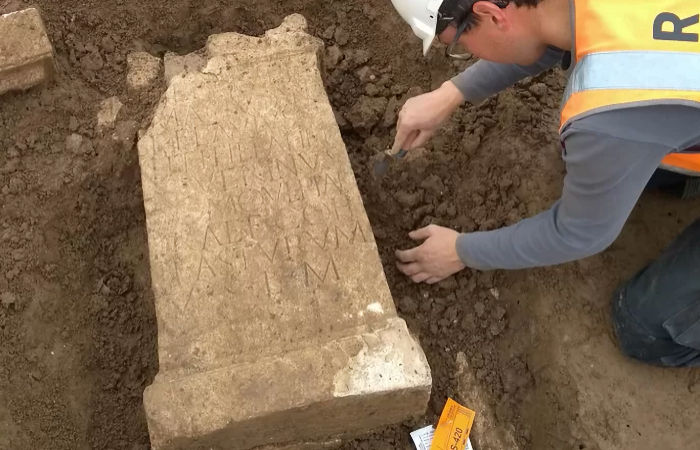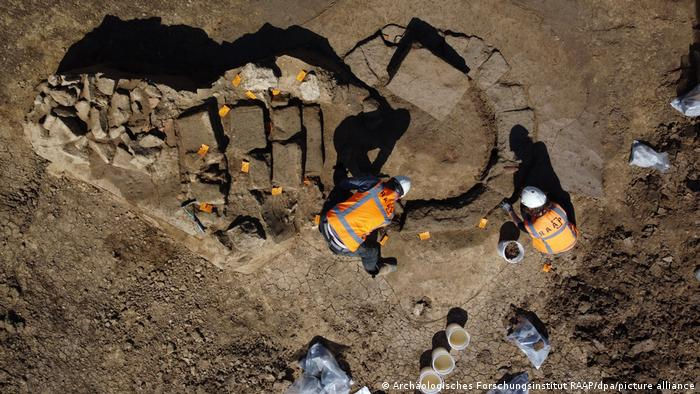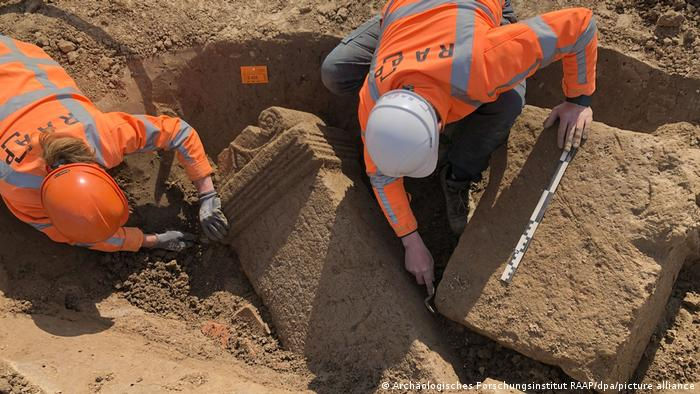Jan Bartek – AncientPages.com – The Cultural Heritage Agency of the Netherlands has announced a unique archaeological discovery at Herwen-Hemeling (Zevenaar) where scientists have unearthed a complete and intact ancient Roman temple.
Nothing has been known about this remarkable, sacred building until now. The find was presented on Monday in Zutphen.

Part of the uncovered ancient Roman temple at Herwen-Hemeling (Zevenaar). Credit: Raap
According to the Cultural Heritage Agency of the Netherlands, this is a unique find on the site of the Wienerberger brick factory. More finds have been made around Zevenaar, but this one is considered very special.
“In the 25 years that I have been an archaeologist, I have never found a Roman sculpture,” says Erik Verhelst van Raap. There are probably several temples on the site of the excavation.
The nearly 2,000-year-old Roman temple complex has a tiled roof and “colorfully painted walls”.
Remains of idols, reliefs, and painted plaster have been found. A special feature is the discovery of several complete votive stones or altars dedicated to various gods and goddesses.
This is very exceptional for the Netherlands, but also internationally, according to experts. From Friday, various masterpieces from the site will be on display in Museum Het Valkhof in Nijmegen. It is a stone building, which makes it special. Until now, mainly wooden buildings have been found.

One of the more unusual aspects was the discovery of a well with steps leading down into the water. Credit: Cultural Heritage Agency
Beginning in the year 19 B.C. the Roman period in the Netherlands spanned more than five hundred years.
“In the Netherlands little heritage from the Roman period remains above ground, although beneath the ground it is a different story. The wet soil here has helped to preserve organic materials, such as wood and leather, in particular. As a result, the Netherlands has become renowned due to the large number of ships discovered here. The story of the Romans is told in the Netherlands not only at museums but also through visualizations constructed in various locations.” 1
This explains why the discovery of an intact ancient Roman temple is an archaeological breakthrough in the Netherlands.

Dutch researchers have celebrated the find, which included dozens of small, stone altars like the ones pictured above. Credit: Cultural Heritage Agency
“According to the archaeologists, Roman soldiers in Herwen-Hemeling prayed to their gods from the 1st century to the 4th century. The stones are dedicated to Hercules Magusanus, Jupiter-Serapis and Mercury. A large stone well may also have had a special function: a stone staircase led down into the water.”
See also: More Archaeology News
Every now and then large sacrificial fires burned around the temples, the hearth pits of which have been found. Clothes pins were also found – undamaged, says Erik Verhelst van Raap. “We never really find this.” 2
Several Roman sanctuaries are known in the Netherlands, but this is the first temple that was found right on the border of the Roman Empire (Limes) in the Netherlands, according to the Cultural Heritage Agency.
Written by Jan Bartek – AncientPages.com Staff Writer
Expand for references
- The Romans In The Netherlands
- Ad News





